Let's be brutally honest: most product marketing sucks. It's feature-obsessed, internally focused, and drowns in a sea of jargon that no real human outside the company understands. It's time for a mindset change. We often hear about 'shifting left' in development – finding problems early and fixing them before they wreak havoc. The spirit of 'shift left' needs to happen in marketing too.
I'm not talking about a basic focus on the customer. I'm talking about a hardcore shift where you essentially become a customer advocate embedded within the marketing team. Let's dive into how this looks in practice and why it's the future for marketing teams that want to drive tangible results.
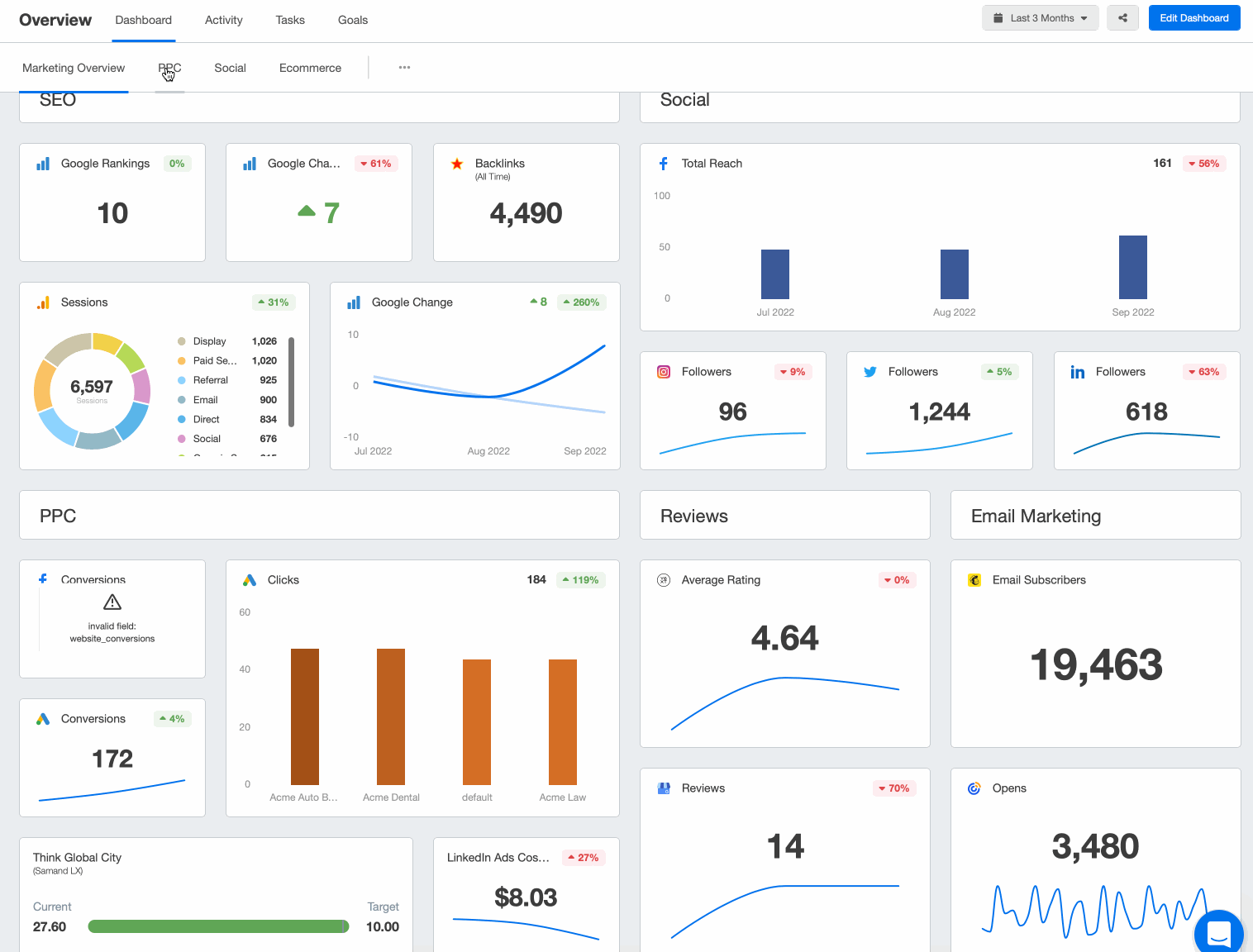
Why You Need Your Marketing to Be WAY More Customer-Centric
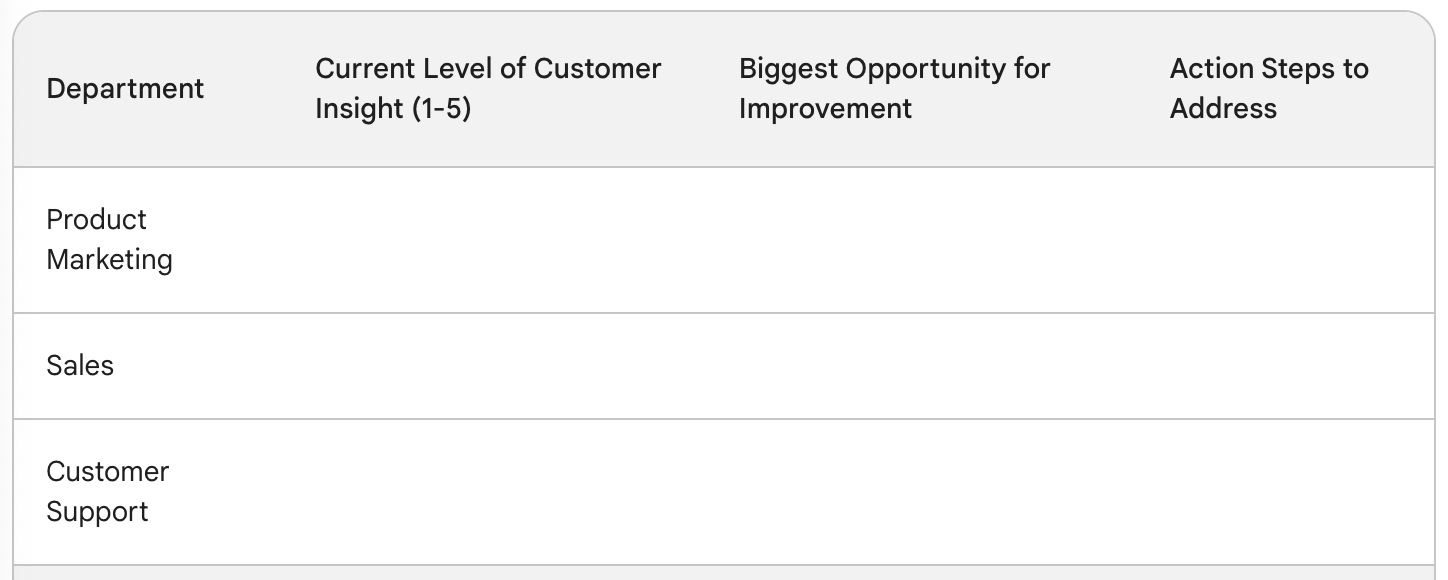
I'm the founder of a marketing agency. We're in the trenches with clients every day. Here's what I see consistently:
The disconnect: Most product marketers are so far removed from their customers that they have absolutely no clue what resonates. It's guesswork on top of more guesswork.
Lost in their own world: Product marketing teams are often enamored with product updates and feature launches, while the market couldn't care less. This internal obsession means missing the big picture of what drives customer decisions.
Metrics that lie: Sure, the open rates may be good, but does that translate into actual deals? Vanity metrics shield bad marketing from course correction.
The solution? A hard shift towards genuine customer understanding embedded at every stage of your marketing.
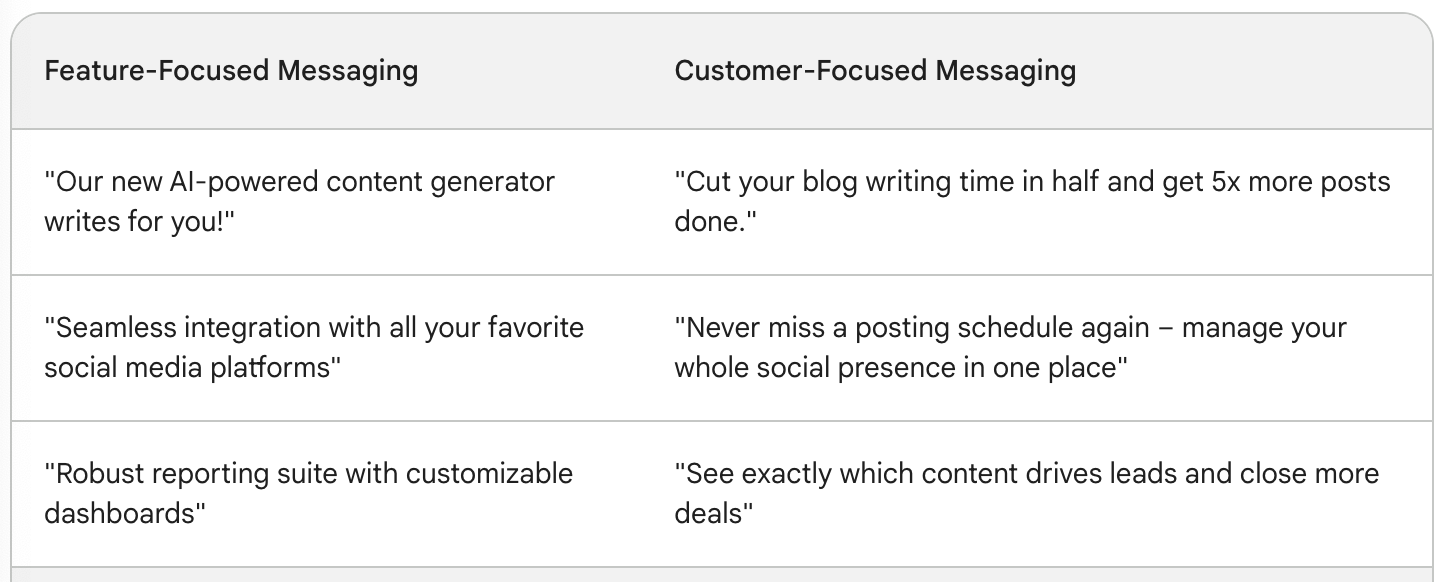
But Why Me, the Product Marketer?
You might be thinking, “Isn't this the job of sales? Or customer success?” It's a fair point. But here's why you, the product marketer, are the linchpin in this transformation.

Cross-Departmental Vision
You're not bogged down by individual customer fires like support. You're not tied exclusively to closing deals like sales. You have a unique position to connect the dots on the full customer journey.
Translation Power
You're the translator between the world of the product and the world of the customer. You bridge the gap between what's built and the problems actually solved for the user.
Early Stage = Biggest Impact
Marketing touches the customer way before any conversation with sales. Bad messaging early on poisons the whole experience, making the work of other teams far harder.
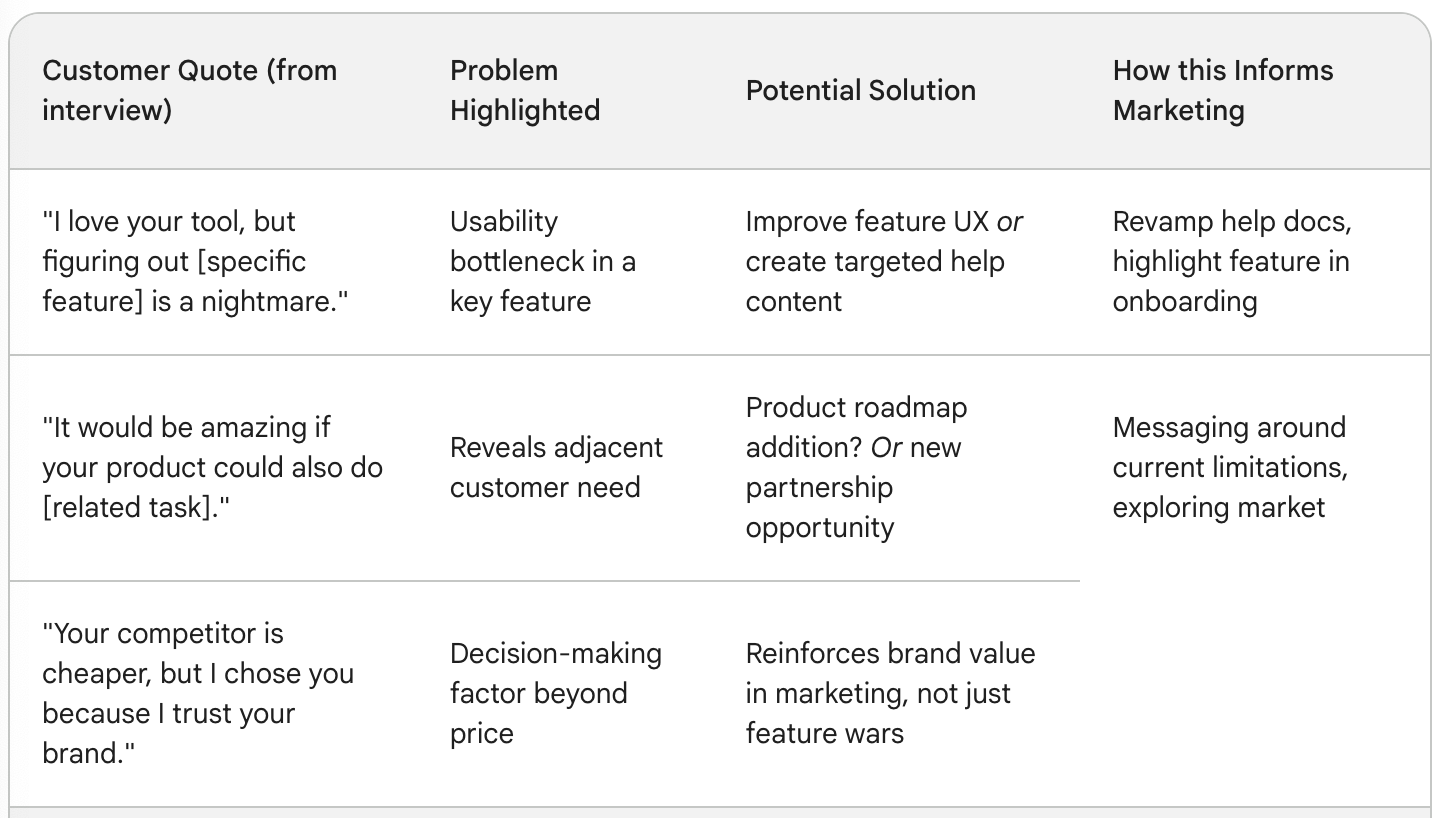
Getting Practical: How to Actually Shift Left
Enough grand talk, let's get tactical. Here are a few high-impact shifts in product marketing:
1. Ditch The Personas, Interview Like Crazy
Personas are a crutch. They become caricatures divorced from reality. Instead, mandate that your product marketing team talks to X number of real potential customers per month. Not just surveys, but real conversations.
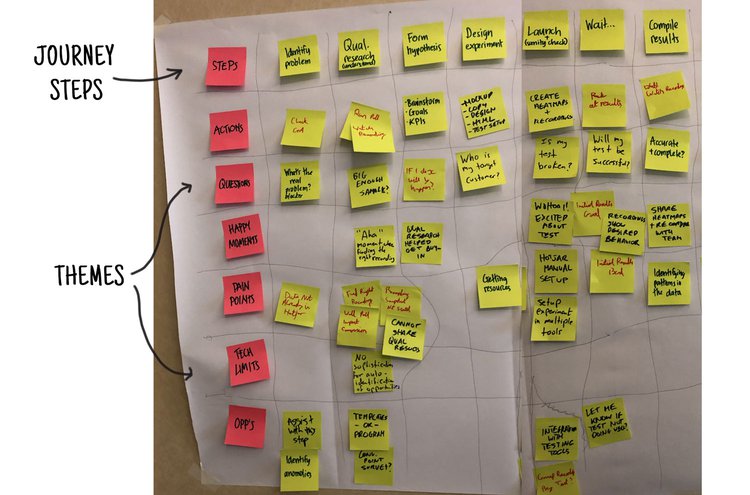
Force the habit: Build this into your OKRs or whatever goal system you use. Have product marketers transcribe notes, share key insights, and highlight verbatim customer quotes.
This is a goldmine for your sales team, too. Package those learnings and insights and suddenly, your sales enablement gets way better.
2. Reimagine Your Competitive Analysis
Most competitive analysis is a glorified feature comparison table. It's table stakes, not an insight. Instead, shift to a problem-centric approach:
| Problem Customer Faces | Your Solution | Competitor A | Competitor B |
|---|---|---|---|
Flip this process:
- Talk to Lost Deals: Sales will hate you for a moment (and that's okay), but insist on digging into why deals were lost to the competition. Get specifics to understand the decision-making process.
- Review Competitor Content: See how they frame the same problems and what solutions they offer. Find their weak spots.

3. Messaging Makeover: Nix Features, Lead with Outcomes
No one cares about your newest whiz-bang widget. I know you're proud of it, but the customer wants the result of using it:
- Bad: “[Super cool new AI content generation tool]”
- Good: “[Get 5x the blog posts done in half the time]”
Train your team to be ruthless about this shift. It means challenging product teams on how they present updates and rethinking the core of your launch plans.

4. Demand Data That Matters
Sure, website views are nice. But they're surface-level. To truly demonstrate the value of customer-centric marketing, you need to track metrics that tie back to revenue.
MQL to SQL conversion: Shows if your messaging is attracting the right leads
Deal Velocity: Are you shortening the sales cycle by warming up leads effectively?
Win-Loss Analysis: Tie specific content or campaigns back to closed deals
5: The Customer-Centric Launch
Most launches are internal lovefests. Let's change that. Here's how to make your go-to-market strategy revolve around real customer needs:
The Pre-Mortem: Before anything goes live, get your marketing, sales, and customer success teams in a room. Imagine the launch failing spectacularly. Why did it fail? This forces you to expose bad assumptions about the market.
Beta = Customer Research: Don't treat beta testers as guinea pigs for buggy code. Structure feedback around their pain points, solutions they wish your product offered, and their hesitation in adopting it fully.
Launch as Conversation: Forget the one-way press release blast. Turn your launch into an opportunity to engage – webinars where prospects ask questions, AMAs on relevant forums, social threads spotlighting customer success stories with the new features.
6: Obsess Over Customer Onboarding
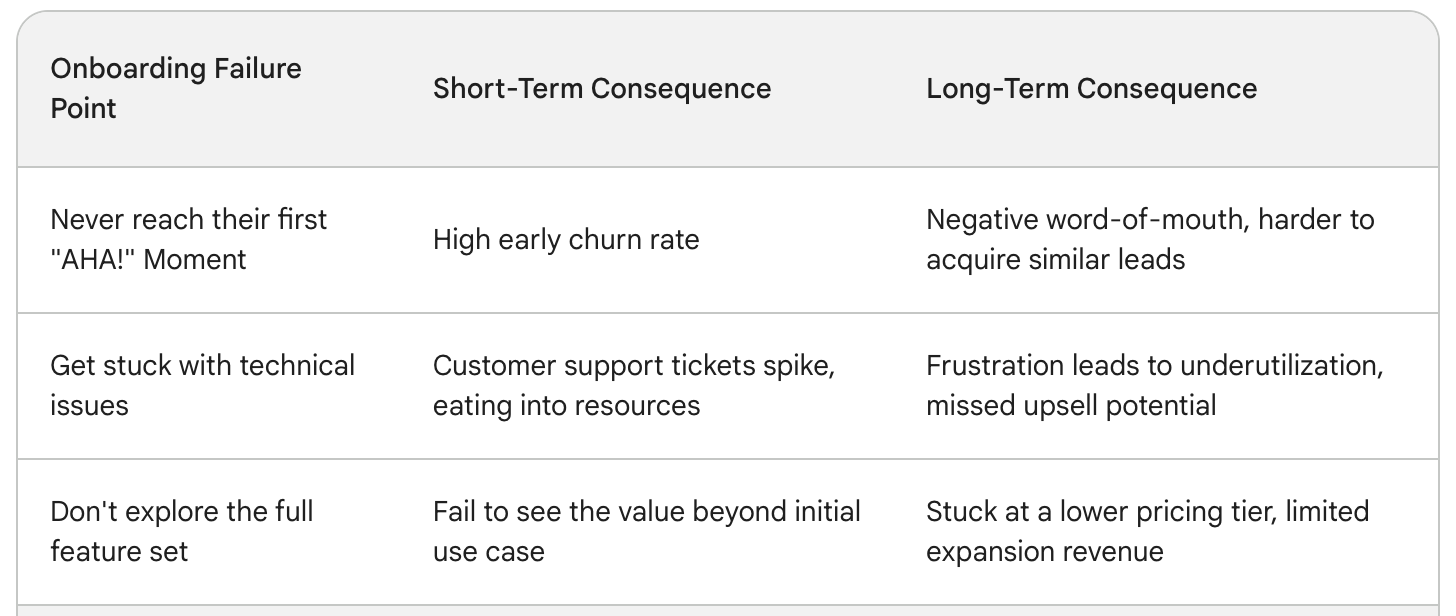
Slick marketing gets them in the door, but the onboarding flow often determines whether they stay (and become raving fans!). This is where product marketing can be a game-changer:
Map the “AHA!” Moments: What are those key points where users' eyes light up and they see the true value of your product? Optimize your onboarding to deliver these as fast as possible.

Content is the Flow: Don't just dump a help center on them. Build out onboarding emails, in-app sequences, and bite-sized videos that lead them directly to the value, tailored to their specific use case.
Don't be Precious: Your onboarding probably sucks, at least a little. Get ruthless external feedback. Hire a UX consultant outside your industry to poke holes and expose blind spots.
Challenges and Getting Buy-In
Let's be real, this kind of transformation can be tough. Here are a few anticipated hurdles and ideas to combat them:
“Not my job” Pushback
Expect resistance, especially from old-school product teams. Frame this as making their jobs easier by ensuring the market actually wants what is being built.
Metrics take time
Customer-centric results aren't instant. Have a few early wins to showcase (like a killer quote from a customer interview) alongside your long-term vision.
Silo-Busting
This requires company-level commitment. Get your CMO on board as this shift touches way more than just the marketing team.
Real-Life Example: Transforming a Feature Dump
Let's imagine your awesome SaaS product just launched bulk scheduling for social media posts. Here's the classic, terrible way to market it:
“Introducing Bulk Scheduling! Now you can manage your social media presence with greater efficiency and save time!”
Ho-hum, boring, and tells me absolutely nothing about why I should change my workflow. Now, let's try a 'shift left' approach:
“Sick of spending hours every week on social media? Get your life back with bulk scheduling. Create a whole month's worth of posts in one afternoon.”
See the difference? It focuses on the pain the customer actually experiences and the aspirational outcome.
The 'Shift Left' Product Marketer
This is a big mindset adjustment. It'll take effort, collaboration with other teams, and strong leadership (both from within marketing and from above) to champion this customer-focused approach.
It also takes patience. The best customer insights don't happen overnight.
But here's the deal: if you want your product marketing to actually make a difference, to actually fuel growth, then you have no other choice. The companies winning in the long run won't be those with the slickest slide decks, but those with the deepest understanding of their customers.
FAQ
Q1: My product marketing has always been feature-focused. Isn't this a radical shift?
Yes, it absolutely is. However, it's a necessary shift if you want your marketing to have tangible results. Focusing on features alone doesn't address the customer's underlying problems, pain points, or desired outcomes. By shifting your perspective to how your product genuinely makes their lives better, your messaging becomes far more powerful and resonates with your market.
Q2: What's the first step to becoming more customer-centric as a product marketer?
The foundation is getting out of your bubble and talking to real customers. Set a mandatory goal for yourself and your team (if you have one) of conducting a specific number of customer interviews every month. It's not about surveys with generic questions – it's about in-depth conversations that uncover how people think and the language they use.
Q3: Sales already talks to customers – isn't that enough?
Sales conversations are valuable, but they have a different goal: closing a deal. You want to dive into how the customer views the landscape of solutions before they enter the sales funnel. Analyze lost deals, talk to prospects who are still on the fence, and look at the broader problems that your ideal customer is struggling with.
Q4: How does this 'shift left' approach actually impact my day-to-day work?
It should influence everything! It means rewriting your website copy to ditch feature lists and emphasize benefits. It revamps your content strategy into one focused on addressing common customer pain points. It even influences your product launch strategy to prioritize the user experience rather than a purely internal view of what's 'cool' in a new release.
Q5: Honestly, getting this kind of buy-in sounds difficult. Any tips?
It won't be easy, especially if the company is stuck in an old-school mindset. Start by finding a few quick wins – a customer interview that uncovers a super actionable insight, or a rewrite of a landing page that boosts conversions. Build your case with results, and look for allies in forward-thinking parts of the business, whether it's a product manager or even someone in customer success.
Q6: My product is quite technical. How do I apply customer-centric marketing to something complex?
This is even MORE important for technical products! Break down complex concepts using analogies, focus on the real-world impact, and create content specifically targeted towards the different levels of technical understanding your buyers might have. Don't assume everyone has the same knowledge – that's the fastest way to alienate potential customers.
Q7: What's the role of customer onboarding in all of this?
Customer onboarding is where the rubber meets the road. You can have fantastic marketing, but if the initial user experience is confusing or fails to deliver on the promised value, customers will churn quickly. Optimize for those "Aha!" moments when the user sees the solution in action.
Q8: What are some common mistakes to avoid when trying to be more customer-centric?
Don't use 'customer-centric' as just a buzzword without actually changing your processes. Avoid generic buyer personas that aren't grounded in real conversations. And never assume you know what the customer wants without backing it up with interviews and data.
Q9: Are there specific metrics I should track to measure the success of this shift?
Focus less on vanity metrics and more on those that tie to business outcomes. Track MQL to SQL conversion rates, deal velocity, win-loss analysis on a deeper level, and overall customer lifetime value.
Q10: Where can I find more resources to help with this transformation?
There are incredible blogs, newsletters, and communities dedicated to customer-centric product marketing. A few starting points include resources from companies like Drift, Intercom, and HubSpot. Look for case studies, templates, and specific tactics to continue learning.






